By Augustinas Maciulis from theaquariumkeeper.com
Bucephalandra is a well-known plant in the fishkeeping hobby, that is very hardy and can be used in almost all aquarium set-ups. This plant is sometimes also referred to as “buce”, and has a lot of different variants, that differ in color and appearance.
It is a very slow-growing plant, that sometimes can be pricy, due to high demand amongst fellow aquarists. But there is an amazing way to grow a bigger amount of this amazing plant with very minimal equipment and care. Using this technique, you can easily have more of this plant in just a few months. There is no magic, just simply replicating the natural environment of this plant. Keep reading to find out more!
Content Table
What Are Submerged and Emersed Plants?
If you do not know the difference between submerged and emersed plants, don’t worry, because the concept is not hard to understand. Firstly, emersed aquarium plants can grow out of the water, for example, the bucephalandra plant can happily survive while being only partially underwater, while more fragile plant species like hornwort (Ceratophyllum demersum), can only survive being fully submerged. In other words, plants that can grow out of the water are called amphibians, and bucephalandra is one of those versatile plants.
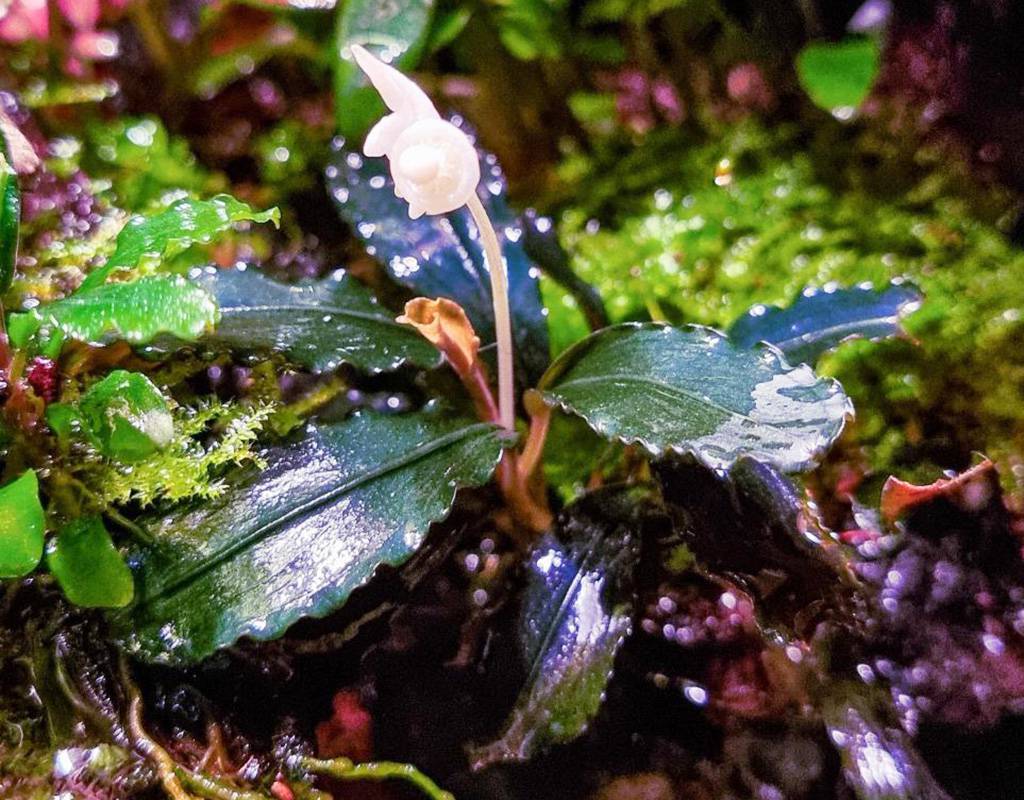
Another thing that is important to mention is that some aquarium plants are very fragile and can only live in specific conditions. A lot of people buy aquatic plants and do not know that some plants need particular requirements. There can be a lot of reasons why aquarium plants are dying, but the most popular is bad conditions. Amphibious aquatic plants are the opposite thing of fragile plants. They can easily adapt to their surroundings and in most cases can tolerate a lot of different water parameters. There are similar plants to buce, which can also be grown emersed:
- Micranthemum ‘Monte Carlo’
- Java Fern
- Anubias
- Ludwigia Peruensis
- Alternanthera Reineckii
More About Bucephalandra Plant
Bucephalandra was first discovered in 1858 on an island called Borneo, which is in Indonesia and is the third-largest island in the world. The plant itself is very hardy and can be kept in a lot of different aquarium creative environments. Bucephalandra in nature is found near rivers, streams, lakes, and ponds. This plant can adapt to different environments, and usually switches from emersed and submerged growth multiple times a year, depending on the conditions.
If it is the rainy season, the plant will be fully submerged near a lake or a river, while in normal weather, it may be partially submerged. Bucephalandra also adapted to low lightning over the years, because it mainly grows in thick jungle-like vegetation. Here is the basic information about this plant:
- Water Temperature: 22–28°C (72–84 °F)
- pH: 6–8
- Lightning: Low or Medium
- CO2: Low or Medium
- Fertilizer: Liquid fertilizer is needed, or nutrient-rich substrate if the bucephalandra is going to be planted
- Planting: Can be attached to decorations, rocks, driftwood, or planted in the substrate. Be careful not to plant buce’s rhizome, because the plant will die
- Height: 1-10 cm
- Different types of plants: 30
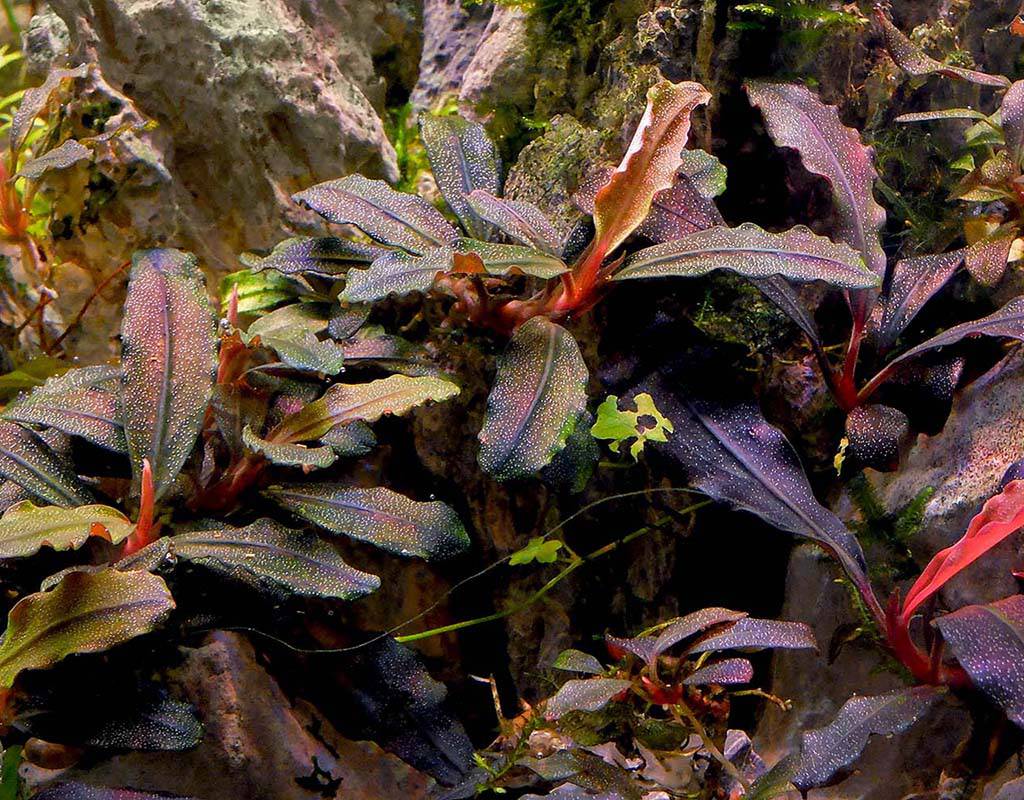
How to Make a Bucephalandra Plant Farm
This particular setup is very easy because the goal is to replicate the natural environment of the bucephalandra plant. With this farm, you can easily grow your aquatic plant using natural sunlight and do very little maintenance. You can later sell the new-grown bucephalandra pieces or use them in your aquariums.
Get all the required materials
To make this setup work, you only need a couple of things, which are relatively cheap to get and can be found almost anywhere.
- Container
Your bucephalandra plants will need a place to grow. A basic food plastic container will simply be enough for them. Make sure the container is clear, and is not in another color, because different colors may affect the light your buces are going to get from the sun. The container itself will have to have a solid lid, that you can remove when you want. Also, the lid itself has to be good, because buce plants are going to be grown in high moisture and wet environments, so you don’t want any unnecessary gaps because of your lid.
The minimum size of the container should be 10cm x 10cm x 10cm. If you have more buce plants and feel that it is not enough, go for a bigger container. Remember, more space will not harm your plants.
- Substrate
This step simply depends on your budget. You only need a substrate that has a lot of nutrients, it does not matter whether it is basic dirt for flower plants used outside or expensive aquarium soil. Just make sure that the substrate has a lot of nutrients because that will be the main food source for your bucephalandra plant.
Prepare the Container
To begin, poor your chosen substrate in the container, make sure there is at least 5 cm of the substrate so that you will have enough depth to plant bucephalandra plants. Secondly, poor water (temperature should be 22–28°C (72–84 °F)) into the container until it reaches the substrate top. Thirdly, take the lid and puncture 2 holes, that would be used for ventilation. You can make 1 hole on the left side, and 1 hole on the right side.
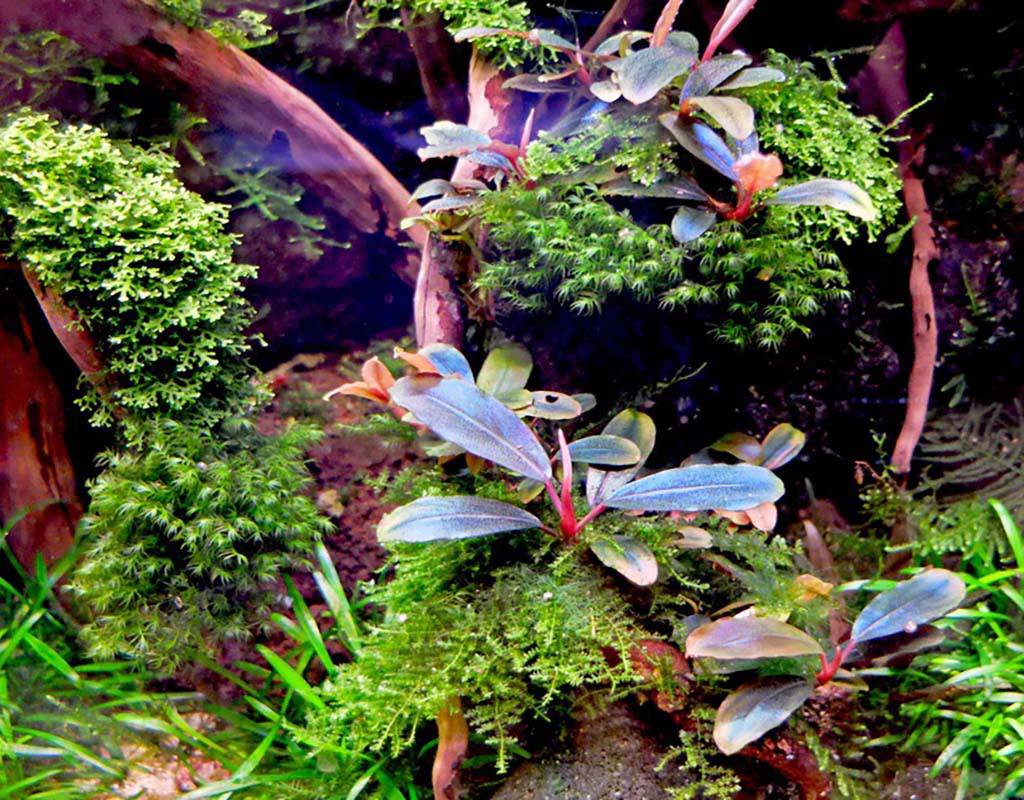
Planting
Now you are ready to plant. Before planting, it is important to know, that you can’t plant the rhizome of the bucephalandra into the substrate. The rhizome part of the plant always needs to be above the substrate, because it will eventually rot, and the plant will be killed if planted incorrectly. Gently take the roots of the plant and put them in the substrate, while making sure that the rhizome of the plant is just above the substrate. When you are done planting, spray down the buce plants with some water and close the lid. Place your newly planted farm near a window and slowly enjoy the growth of your bucephalandra plants.
Minimal Care
This setup does not need a lot of maintenance. Simply spray down your plants every day, and that is it! Also, this setup best works at room temperature, which is not too cold and not too hot. Strong heat and cold can alter the goal of this setup and can damage the plants, so if you see that your buce plants are not doing so well, try placing them in a slightly different room temperature and check if they improve. For reference, a normal room temperature is considered around 20°C.
Final Word
Buces are great plants that shine in every aquarium. This tutorial shows, how you can save money and that the bucephalandra plant is very versatile and can adapt easily to almost any condition.
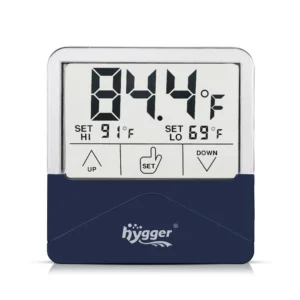
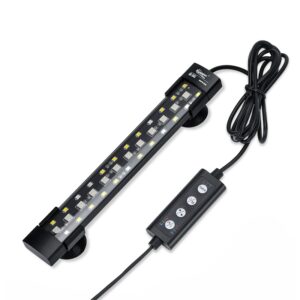
Thanks, I just want to clarify that I’m growing the buce emersed – that is, out of the water in a terrarium. My first attempts all failed. I’m still keeping the rhizomes in the terrarium, but it doesn’t look good. I heard some people say not to leave it in wet substrate, as it will rot.
howdy, high-minded blog on oleaginous loss. said helped.
Hi, I bought some bucephalandra and trying to grow them emersed. I made sure the rhizomes are above the substrate and out sone of the roots in. I’m using aqua soil. However the leaves started melting in emersed form. What might I be doing wrong?
Hi Victor Ng-Thow-Hing,
Please don’t get discouraged if you see your buceps melt.
The buceps emersed generally melt due to lack of water/oxygen or high temperature, check the temperature of your room or the tank water, and keep the temp between 25 C. You can cool the water, or turn on the air pump 24 hours to aerate your tank.
If you keep the buceps newly in the old tank, don’t worry, it is common when it is adjusting to its new surroundings. But buceps are very prone to melting in new tanks because most new tanks have not been cycled sufficiently.
Buceps will go through stages to become the most beautiful buceps.
hygger team